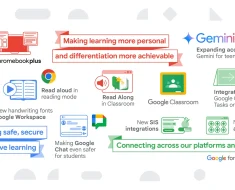Conversational AI is a specialized area of artificial intelligence focused on creating systems that can simulate human-like interactions through text or voice. This technology leverages natural language processing (NLP), machine learning (ML), and dialogue management to facilitate seamless conversations. This article aims to address common questions about conversational AI, providing a comprehensive guide for understanding its applications and the leading platforms available today.
Understanding Conversational AI


What is Conversational AI?
Conversational AI refers to artificial intelligence systems designed to simulate human conversation. It integrates NLP to understand and process human language, ML to learn from interactions, and dialogue management to maintain the flow of conversation. Unlike rule-based chatbots, conversational AI can handle complex queries by understanding context and intent¹.
What is Conventional Artificial Intelligence?
Conventional AI, often referred to as discriminative AI, excels at tasks like classification and prediction. It is trained on large datasets to identify patterns and make decisions based on learned data. While conversational AI focuses on simulating dialogue, conventional AI serves broader functions such as image recognition or predictive analytics².
What is the Difference Between Chatbot and Conversational AI?
A chatbot is a software application designed to simulate text or voice interactions with users. However, chatbots typically follow predefined scripts or rules. In contrast, conversational AI encompasses more advanced technologies like NLP and ML that enable machines to understand context, learn from interactions, and respond more dynamically. While all chatbots are conversational tools, not all conversational AIs are limited to simple chatbot functionality³.
Popular Platforms and Accessibility


What is the Best Conversational AI?
Several platforms stand out in the field of conversational AI due to their robust features:
- IBM Watson Assistant: Known for its advanced NLP capabilities and scalability across industries⁴.
- Google Dialogflow: Offers powerful tools for building conversational agents that can integrate with various platforms like Google Assistant⁵.
These platforms excel in areas like user experience, scalability, and integration with other business systems.
Can I Talk to AI for Free?
Yes, there are several free options available for interacting with conversational AI. Many platforms offer free trials or basic versions without subscription fees. For example:
- Google Dialogflow provides a free tier for developers to experiment with building conversational agents⁶.
- AI Chatting offers a free chatbot that allows users to ask questions and receive responses without cost⁷.
Applications and Capabilities


Can AI Chatbots Talk to Each Other?
Yes, conversational AIs can be programmed to communicate with each other. In certain scenarios—such as troubleshooting or customer service simulations—bot-to-bot communication can be useful for testing systems or managing complex workflows⁸.
What is the Best Free Conversational AI?
Several free or open-source platforms provide basic conversational AI functionalities:
- Tidio offers a free version that includes basic chatbot features suitable for small businesses⁹.
- Landbot provides a no-cost plan for creating simple chatbots with drag-and-drop functionality¹⁰.
While these free options are limited in features compared to premium platforms, they are ideal for users looking for basic interaction capabilities.
Conversational AI in Practice
How Do I Integrate Conversational AI?
Integrating conversational AI into websites or apps involves several steps:
- Choose a platform like Google Dialogflow or IBM Watson Assistant.
- Develop your conversational agent using the platform’s interface or APIs.
- Integrate the agent with your website or app using plugins or custom code.
- Test the integration thoroughly before deployment¹¹.
Many platforms offer pre-built integrations with popular services like Slack, WhatsApp, or Facebook Messenger.
How Does Conversational AI Work?
Conversational AI operates through several technical components:
- Natural Language Processing (NLP): Understands user input by breaking down language into smaller components.
- Machine Learning (ML): Learns from past interactions to improve future responses.
Response Generation: Produces appropriate replies based on user input and context¹².
Over time, these systems learn from interactions and become more accurate in understanding user intent.
Benefits and Considerations


What Are Conversational AI Tools?
Conversational AI tools are software applications that enhance customer interactions by automating responses using NLP and ML technologies. These tools are widely used in industries like customer support, sales, and healthcare to improve efficiency and provide real-time assistance¹³.
Is Alexa a Conversational AI?
Yes, Amazon’s Alexa is a voice-driven conversational AI. It uses NLP to understand spoken commands and responds accordingly. Alexa fits into the broader category of conversational AIs by enabling natural language interactions through voice interfaces¹⁴.
Future of Conversational AI


What is the Most Realistic AI Chatbot?
Advancements in NLP and emotional intelligence have made some chatbots highly realistic in their interactions. Platforms like Google’s Gemini models or OpenAI’s GPT-4 are recognized for their ability to generate human-like conversations by understanding context deeply and responding naturally¹⁵.
Frequently Asked Questions
Here are some quick answers to common questions about conversational AI:
- What is Conversational AI? It refers to systems that simulate human conversation using NLP and ML technologies.
- Can I talk to an AI for free? Yes, many platforms offer free versions or trials.
- How do I integrate conversational AI into my website? Choose a platform like Dialogflow, develop your agent, and integrate it using APIs or plugins.
For further reading on these topics, explore resources from IBM Watson Assistant or Google Dialogflow’s official documentation.
Conclusion
In summary, conversational AI represents a significant advancement in how machines interact with humans through natural language. From simple chatbots to advanced virtual assistants like Alexa, these technologies are transforming industries by improving customer engagement and operational efficiency. As advancements continue in NLP and machine learning, we can expect even more realistic interactions from future systems.
Citations:
1. Google Cloud. “Conversational AI | Google Cloud.” Accessed November 13, 2024.
2. LinkedIn Pulse. “Generative AI vs Conventional AI.” Accessed November 13, 2024.
3. Tidio Blog. “Chatbots vs Conversational AI: Is There Any Difference?” Accessed November 13, 2024.
4. Alltius Blog. “10 Best Conversational AI Platforms in 2024.” Accessed November 13, 2024.
5. Appinventiv Blog. “Top Trends in Artificial Intelligence.” Accessed November 13, 2024.
6. ZDNet Blog. “Google’s New Free Learning Tool.” Accessed November 13, 2024.
7. Aichatting.net Blog. “Free Chatbot – Talk To An AI.” Accessed November 13, 2024.
8. UpTech Team Blog. “How To Build Conversational-AI.” Accessed November 13, 2024.
9. ProProfs Chat Blog. “10 Best Free Chatbots To Boost Your ROI In 2024.” Accessed November 13, 2024.
10. Tidio Blog. “Best Free Chatbot Platforms.” Accessed November 13, 2024.
11. UpTech Team Blog. “How To Build Conversational-AI.” Accessed November 13, 2024.
12. Bernard Marr Blog. “Understanding The Four Types Of Artificial Intelligence.” Accessed November 13, 2024.
13. ClickUp Blog. “20 Best Alternatives To ChatGPT In 2024.” Accessed November 13, 2024.
14. Boost.ai Blog. “Chatbot vs Conversational-AI.” Accessed November 13, 2024.
Please note, that the author may have used some AI technology to create the content on this website. But please remember, this is a general disclaimer: the author can’t take the blame for any mistakes or missing info. All the content is aimed to be helpful and informative, but it’s provided ‘as is’ with no promises of being complete, accurate, or current. For more details and the full scope of this disclaimer, check out the disclaimer page on the website.





